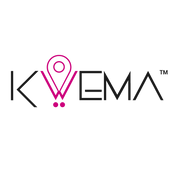Many times, we don’t like to admit that we are doing something the wrong way. However, once we receive different perspectives and spot our mistakes, the best thing is to start again and do the right thing. This is not an exception when it comes to safety.
We asked a group of safety professionals to share their thoughts about what kind of common practices and attitudes damage workplace safety and every professional must avoid. We summarized our findings to four key points.
Underestimate basic procedures
Just because some practices are seen as basic activities, it doesn’t mean that they are not important. Having basic procedures in place at the workplace such as housekeeping, routine inspections, employee supervision and training results in creating a safer work environment by avoiding common mistakes and minimizing workplace injuries.
Also, there can be other issues behind ignoring these practices. For instance, the lack of planning in each project, poor adherence to PPE and equipment standards, as well as contributing to creating unsafe behaviors and attitudes in employees like “if my safety manager is not looking, I can just quickly get it done my way.”
Lack of engagement with your employees
Employers need to have trust in what employers are doing for their safety. Otherwise, they will never feel genuinely committed with their work. When there is a lack of employee engagement in the workplace, this can lead to low levels of productivity and increase the chance of experiencing more work accidents and safety mistakes.
For this reason, employers must be able to build relationships with their employees through being approachable, maintaining employees motivated in order to improve their results at work and being able to effectively communicate with them for continuous improvement. This last one leads us to the next point.
Poor communication
Another common issue when it comes to safety is the lack of communication. Many times, employees notice additional potential hazards or unsafe acts than managers. Then, they have a wrong idea of what the real problems are. For this reason, it is very important that employers give employees the chance to give ideas on how to improve safety practices.
Communicating with employees will allow you to build an atmosphere of dialogue, trust and it will give you the opportunity to connect with them in order to understand their opinions, needs, concerns as well as keep them involved within the safety program.
Assuming that safety culture is not important
Many professionals agree that there is a big issue when there is a lack of understanding of the importance of safety culture. For example, it makes companies only focus on numbers and even assume that workplace incidents are part of the daily routine. But the reality is that workplace culture plays a key role in many ways for business, including safety.
Usually, a safety culture requires management's commitment from the top and with good leadership skills who promotes safety practices, attitudes and behaviors among employees, and encourages them to participate in order to improve workplace safety.
After reviewing these findings, we can say that maintaining a safe work environment can be a difficult task because sometimes we conduct wrong practices that don’t allow us to easily identify potential hazards until they occur. Fortunately, there are a variety of resources, tools and equipment that add value and support safety operations as well as professionals in the field to maintain a safe workplace.
Kwema builds safer workplaces by providing safety wearables to employees who are exposed to potential risks and hazards at their job every day. Our safety devices activate an emergency protocol alerting safety supervisors or 911, and are designed to avoid adoption hurdles and training costs.
Watch how Kwema is disrupting workplace safety
Photo by Tiger Lily on Pexels
